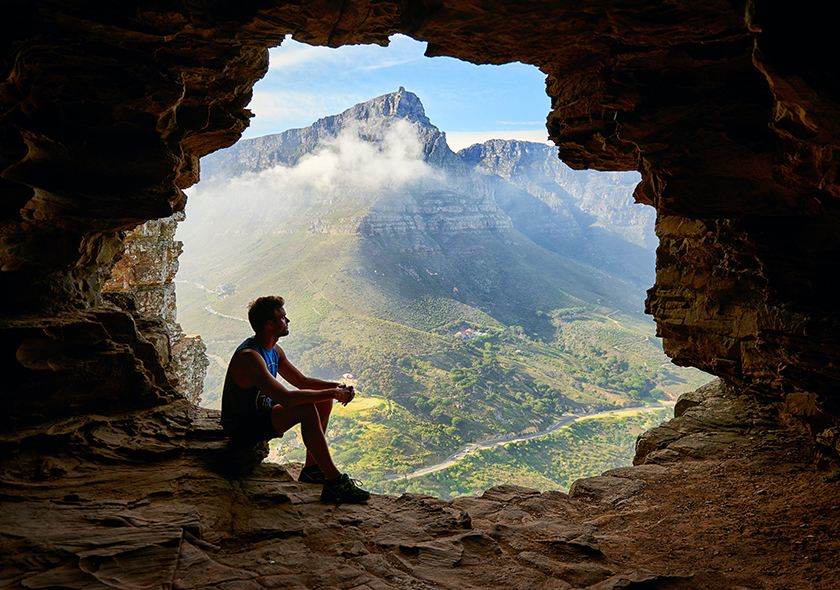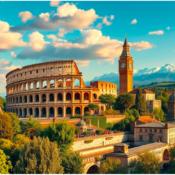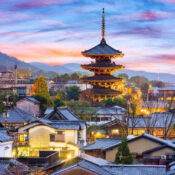16 Amazing Best Places to Explore In Jaipur
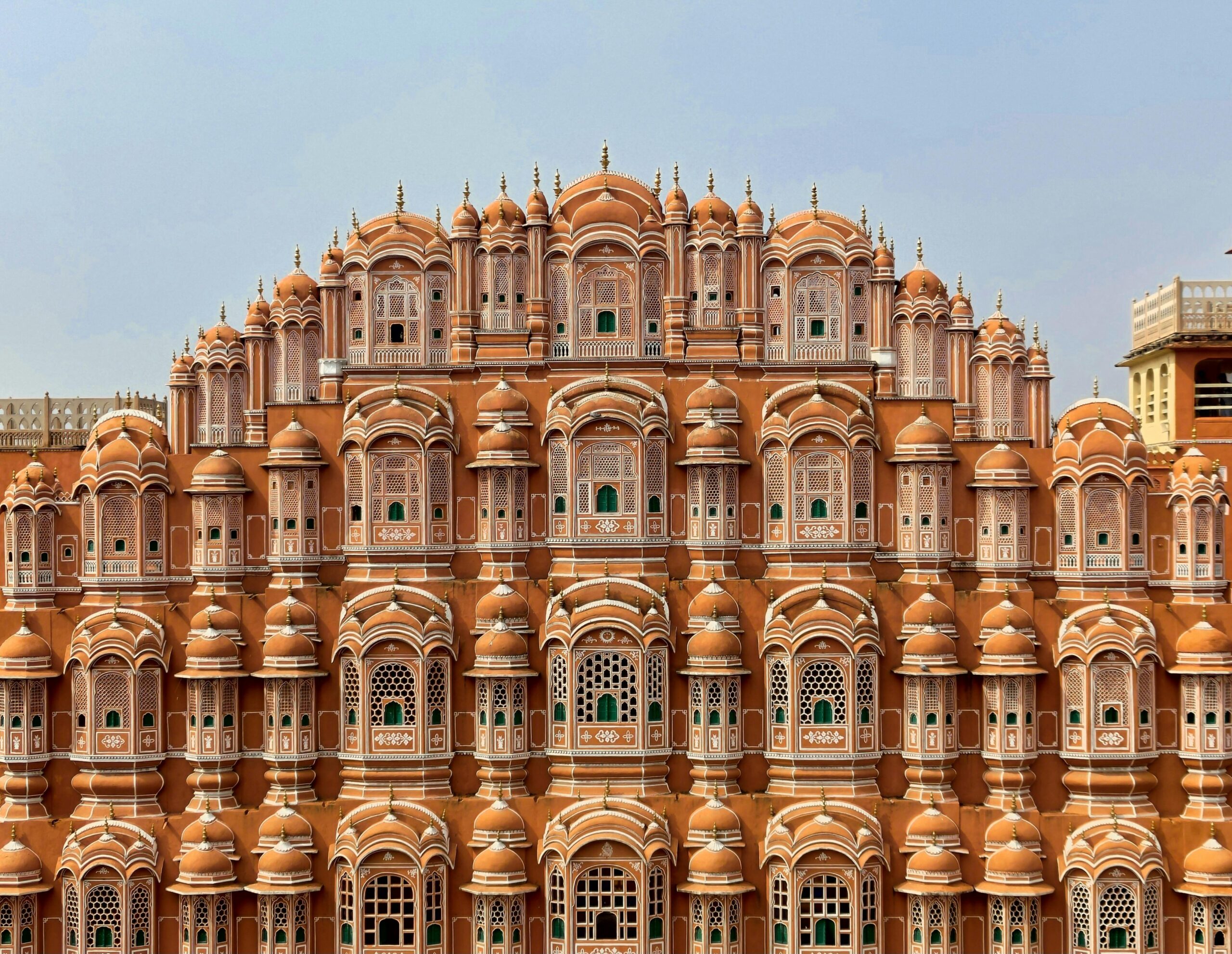
16 Amazing Best Places to Explore In Jaipur
A visit to Jaipur is a must on every vacation to India. Jaipur, sometimes known as “The Pink City” because of the pink hue of its old structures, is a regal wonderland rich in culture and history.
The most popular tourist destinations in Jaipur highlight Rajasthan’s regal heritage, and many of the main sights are easily accessible on foot. Begin by taking a tour of City Palace, an almost 300-year-old palace featuring unique gardens, architecture, courtyards, and temples.
Jantar Mantar, a centuries-old landmark with enormous astronomical instruments commissioned by the city’s founder, lies right next door. From here, it’s a ten-minute walk to the reddish-pink sandstone edifice known as Hawa Mahal. Throughout the 19th century, its unique lattice construction gave royal women a glimpse into public life while keeping them hidden.
Are you prepared to have an amazing journey to “The Paris of India”? Use our guide to the best sights to see and places to visit in Jaipur to plan your itinerary.
Best Places to Visit in Jaipur:
Below are the 16 best Places to Visit:
1. City Palace,Jaipur:
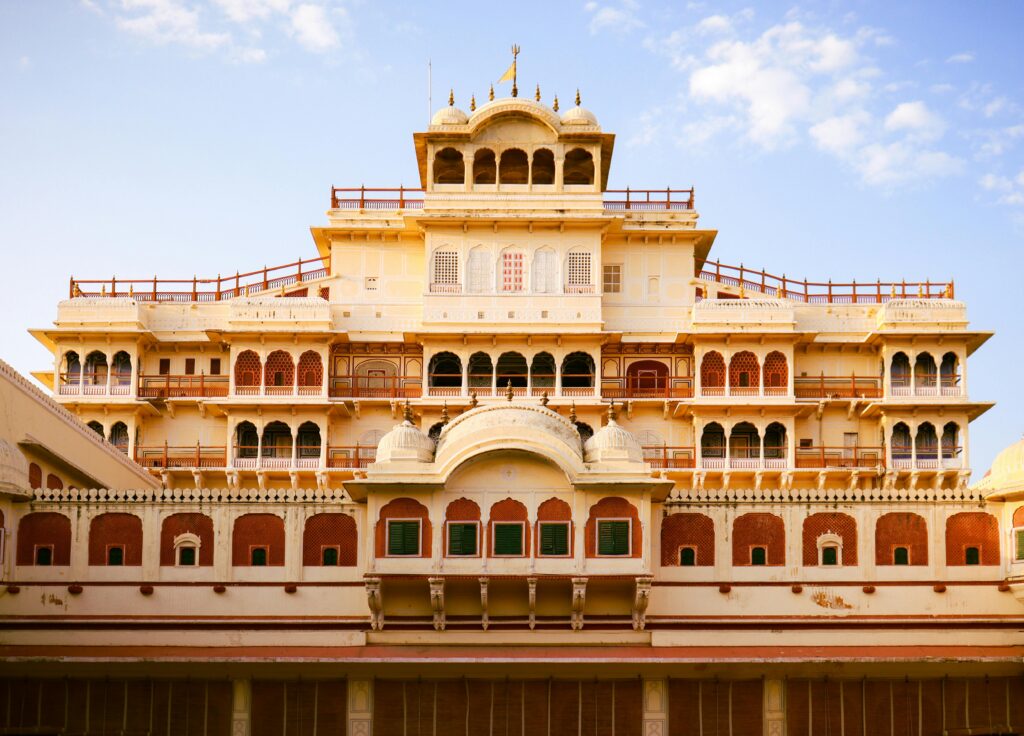
Since Maharaja Sawai Jai Singh II chose to move his court from the city of Amber, City Palace has been a central feature of Jaipur’s Old City for almost three centuries. One of the most popular tourist destinations in Jaipur, the fairytale-like building is still home to the current royal family of the city. It surrounded by massive guard walls.
Beyond just a sand-colored royal residence, City Palace a vast collection of structures centered around several beautifully designed garden courtyards with views of Lake Palace and Jaipur. The entire estate is a magnificent example of Mughal and Rajasthani architecture.
The most striking edifice is the Chandra Mahal, a graceful palace with domed domes and curved eaves that is home to the current inhabitants. Its seven stories are all written in a very distinct style. The admission fee includes the main floor, but to access the upper, you’ll need to schedule a private tour.
The Armoury, a museum-like area devoted to preserving exquisitely crafted daggers and swords, Pritam Niwas Chowk (Peacock Courtyard), which features mesmerizing doorways painted to look like the feathers of its namesake bird, Diwan-i-Am (Hall of Public Audience), which displays the palace’s exquisite collection of miniature paintings, and Mubarak Mahal (Welcome Palace) are additional noteworthy sites for sightseeing.
See the Friends of the Museum Bazaar after touring the castle. Some of the best mementos Jaipur has to offer are available there, but at hefty rates.
2. Janter Manter, Jaipur:
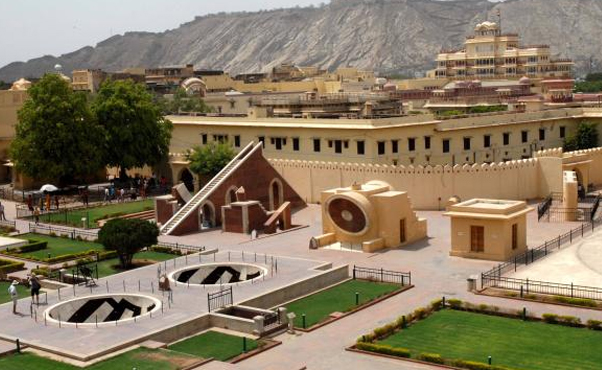
Jantar Mantar can initially appear to be nothing more than a collection of enormous abstract sculptures. This attraction, however, is not an art gallery; rather, it houses a unique collection of astronomy instruments that were first used to measure the stars about 300 years ago by the Rajput ruler Jai Singh II.
This UNESCO World Heritage Site has about twenty structures, each with a unique function. Samrat Yantra, the observatory’s huge sundial, is especially impressive. Its massive shadow, formed by anything 27 meters tall, can precisely calculate time to the nearest two seconds.
The intricate Jai Prakash uses the shadow of a metal plate suspended atop a structure that resembles a sunken bowl to track time as well. The cleverly designed Rama Yantra circular walled construction that can pinpoint the exact locations of celestial objects. The observatory has additional equipment that can track stars and even forecast eclipses.
Tip: If you want to know how each building functions at Jantar Mantar, it’s worth hiring a private tour.
3. Hawa Mahal, Jaipur:
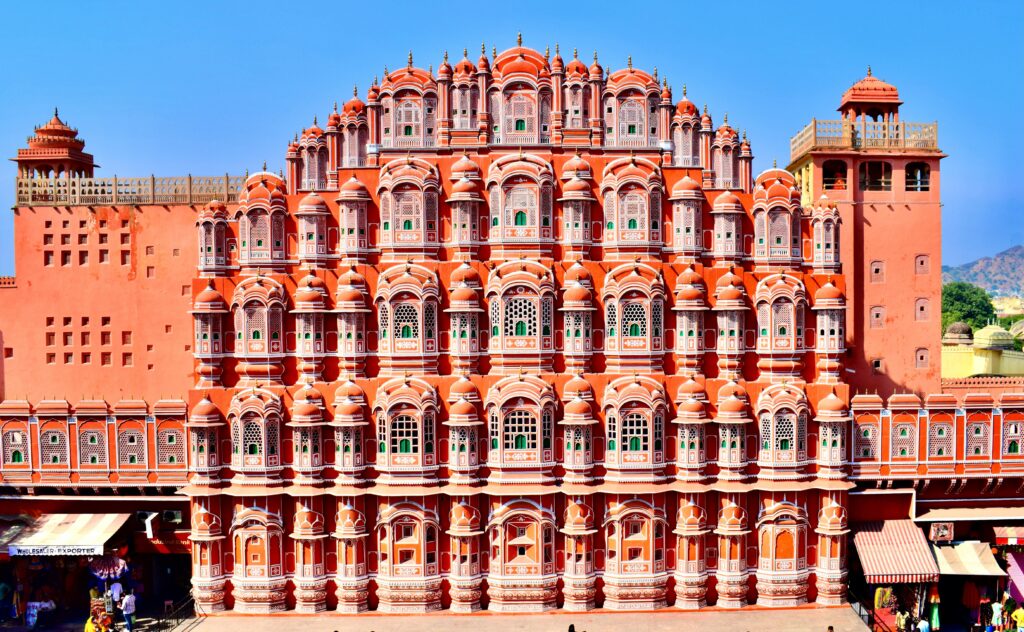
Your ideas about the architecture of Jaipur’s structures most likely originated from Hawa Mahal (Palace of Breeze). This building, which highly recommended in Jaipur, contains all of the characteristic architectural elements seen on postcards of the city. Including rows of tiny windows and a salmon-pink, honeycombed exterior that modeled after the Hindu god Krishna’s crown.
The famous structure constructed in 1799 to enable royal women to view street festivities discreetly from the public. With 953 windows letting in plenty of natural light, it’s the ultimate summer palace (and a great place to escape the intense heat of Rajasthan today).
The palace has a tiny museum where visitors can learn about the history of the sandstone edifice; the ceremonial armor collection is especially fascinating. The palace’s winding passageways are also open for exploration. Don’t overlook the vibrant glasswork in the doors and windows of Hawal Mahal, which gives the rooms an ethereal radiance.
4. Amber Fort:

Amber Fort, one of India’s most popular forts, is located in Jaipur. Constructed around 1592, the monolith composed of sandstone and marble perched on a small hill approximately 20 minutes’ drive northeast of Jaipur’s downtown. The main draw of this site is its immaculate display of Rajasthani architecture.
Usually, getting to Amber Fort requires a little climb upward, but it’s definitely worth the effort. It’s adorned with elaborate marble inlay patterns in almost every hue of the rainbow. There is an amazing garden courtyard outside each of the four distinct portions that make up the layout of the fort. The underground tunnels beneath the fort are genuinely open for exploration; parts of them have even rebuilt, though you’d never know it from above.
The best way for visitors to learn about the intriguing history of romance, betrayals, and legends at this UNESCO World Heritage Site is to book a private guide at the Amber Fort.
5. Albert Hall Museum, Jaipur:
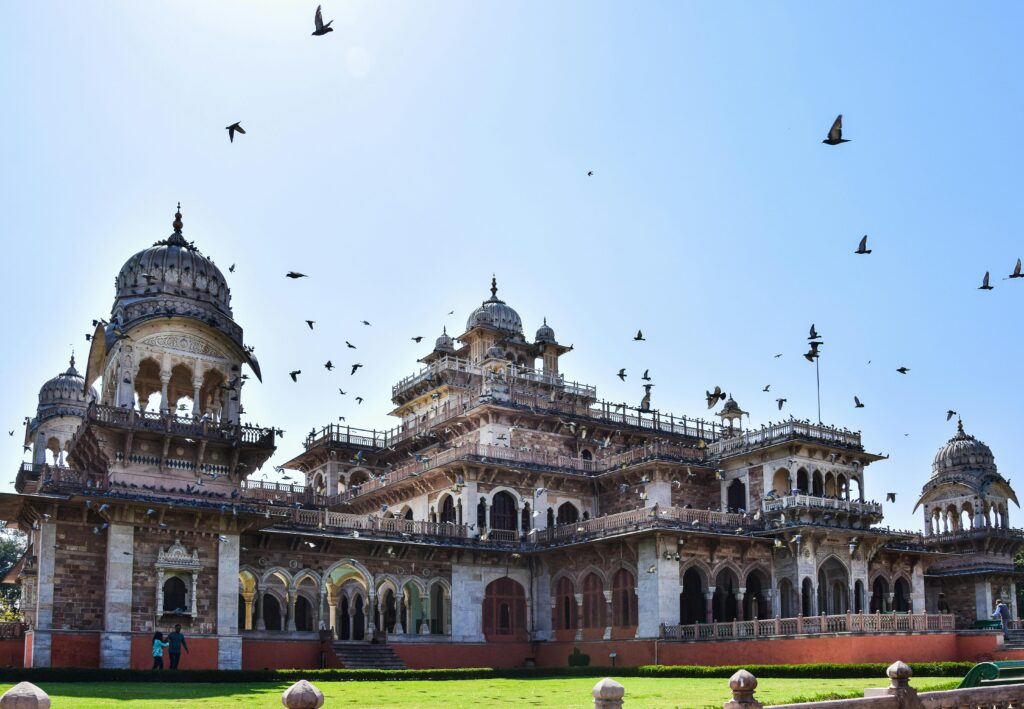
Upon visiting the Albert Hall Museum in Jaipur, English writer Rudyard Kipling claimed that it served as a “rebuke to all other museums in India from Calcutta downwards.” Coming from the son of a curator, that is excellent praise indeed, and worthy of this esteemed institution.
The Albert Hall Museum, Rajasthan’s oldest museum, has a large collection of artwork and important historical items. Arrive for the Egyptian mummy but stay for the antique coins from various Indian historical periods, the quaint permanent displays of miniature paintings, the 18th-century clothes of various classes, and the curious collection of 19th-century clay figures that represent every yoga stance.
Tip: Go to the museum at night when the attractive building’s facade brightened with multicolored lights.
6. Birla Mandir,Jaipur:
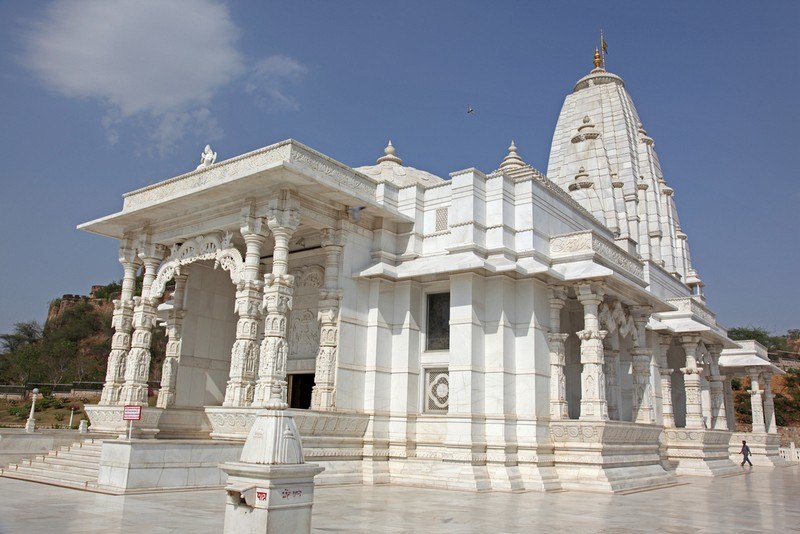
In a city where pink appears to be everywhere, the stark white marble Birla Mandir is a major focal point. The Hindu temple honors Vishnu, one of the principal gods of the faith, as well as Lakshmi, the goddess of riches and purity. It’s among the top destinations in Jaipur for both visitors and devoted Hindus.
The magnificent building has a serene, quiet ambiance that is ideal for appreciating the exquisite marble sculptures, God shrines, and breathtaking sunset vistas. Even though it won’t take you longer than 30 minutes to gain a feel for the area, the experience will be a rejuvenating diversion from a day of sightseeing.
7. Nahargarh Fort:
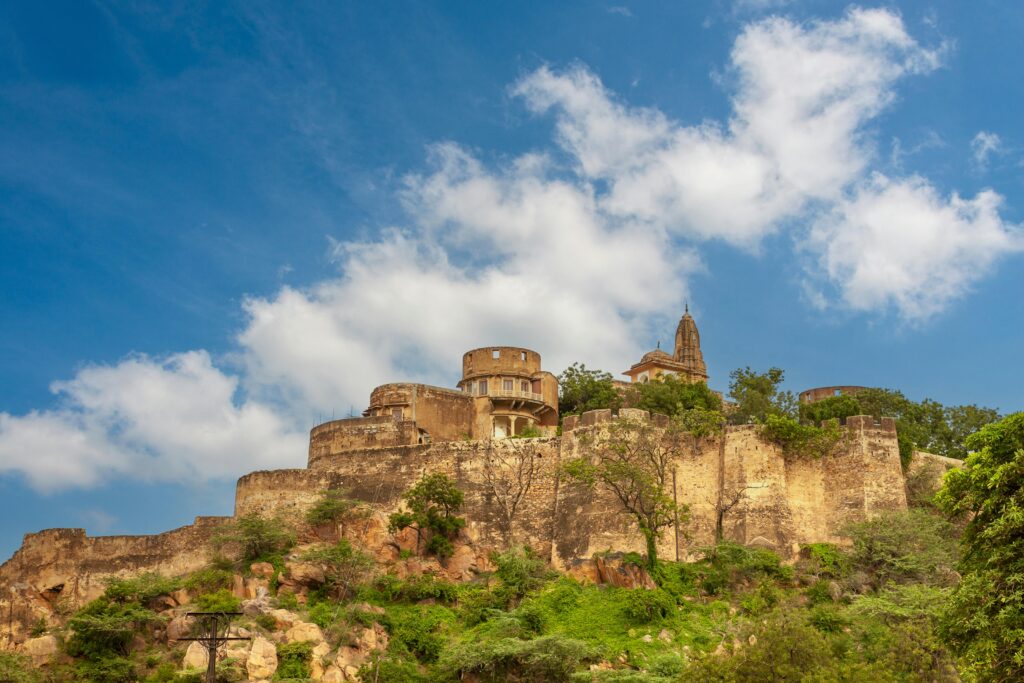
When it comes to sightseeing in Jaipur, Nahargarh Fort offers some of the best vistas around. This nearly 300-year-old landmark, also known as Tiger Fort, is perched atop the Aravalli Hills and offers sweeping views of the city. It was strategically placed to protect the city from attackers in the distant past.
But this fort is more than simply a strong wall; inside is Madhavendra Bhawan, a royal summer retreat. The lavish Rajasthani structure has twelve identical boudoirs for the queens, connected by mural-lined halls to the king’s chamber.
Additionally, visitors can tour the sculpture park and wax museum at the fort. If you’re in the mood for some authentic Indian food, visit one of the many restaurants in the fort.
8. Galta Ji, Jaipur:
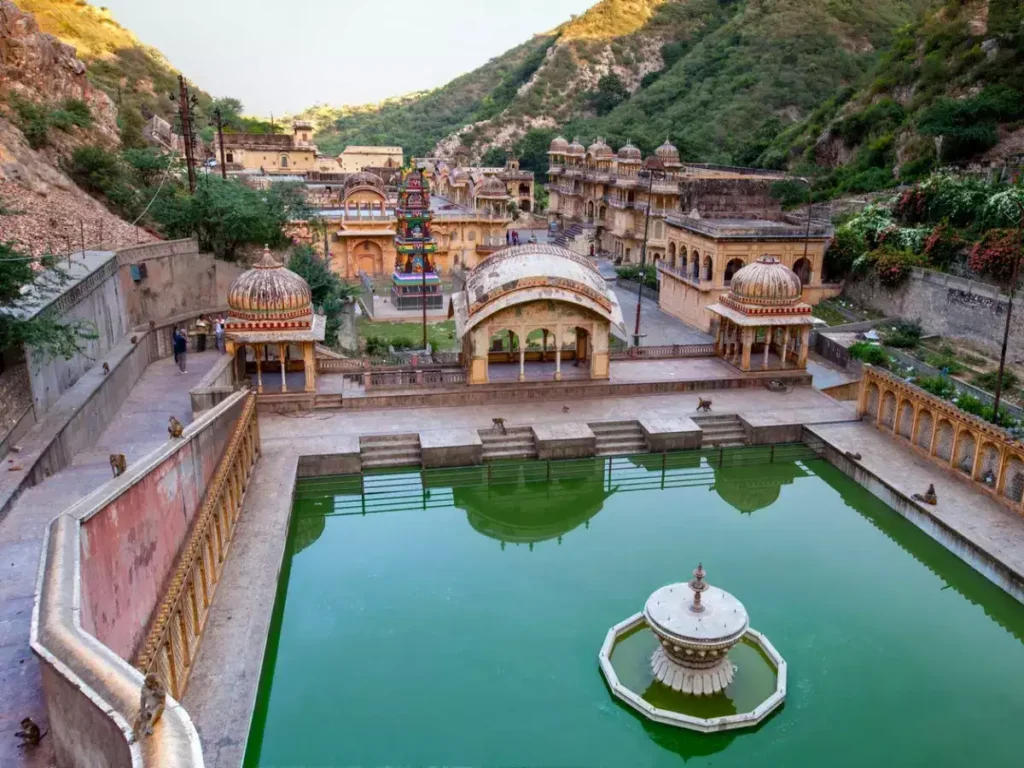
In Rajasthan, a desert state, water sources might be few and far between. It is therefore not surprising that the Hindu temple Galta Ji was constructed in remembrance of a natural spring that was found in a mountain pass in the Aravalli Hills.
The temple, which is tucked away between cliffs, has a few holy water tanks with small fountains in them as well as murals depicting stories of the Hindu deity Krishna.
If you want to view monkeys, Galta Ji is among the top spots to visit in Jaipur. It is known as “The Monkey Temple” because hundreds of macaques and langurs call it home. Although brave visitors may choose to purchase a handful of peanuts at the entrance to entice the monkeys, it’s best to simply observe the boisterous animals from a distance.
9. Amarpali Museum:
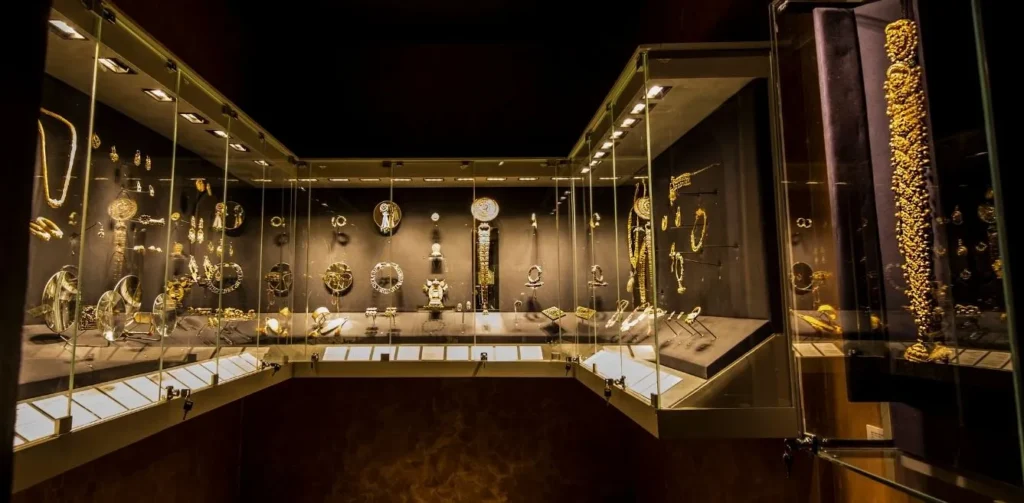
In the late 1970s, the creators of the well-known Indian jewelry company Amrapali Jewels began collecting antique jewelry and soon came to the realization that some of these unique jewels should be kept and showcased. Thus, the Amrapali Museum was established and quickly rose to prominence as one of Jaipur’s must-see locations.
The jewelry museum in Jaipur showcases the wide variety of Indian craftsmanship with two entire floors of shimmering diamonds and artifacts from its 4,000-piece collection.
The exhibits demonstrate the great regard Rajasthanis have for their gold, silver, and priceless stones. Among the jewels are silver bands for the legs of the horses, a silver-covered chariot, ornate shoe coverings, and an exquisite crown fit for a Himachal Pradeshi groom.
The Museum Shop offers a wide selection of necklaces, bracelets, and other wearables for sale; however, some pieces are only for exhibition.
10. Legacies Museum:

Rajasthan’s most significant handicrafts and artworks were kept in private collections for a long time, off limits to the public. Everything changed in 2017 with the opening of the Museum of Legacies by the Government of Rajasthan.
This attraction, which is housed in a home that dates back two centuries, features a variety of Indian needlework, enormous Rajasthani puppets, Pichwai paintings, and much more.
The exquisite marble latticework is not to be missed. It is mesmerizing how much whirling intricacy the artists were able to chisel out of such a sturdy, unyielding stone.
11. Jal Mahal, Jaipur:
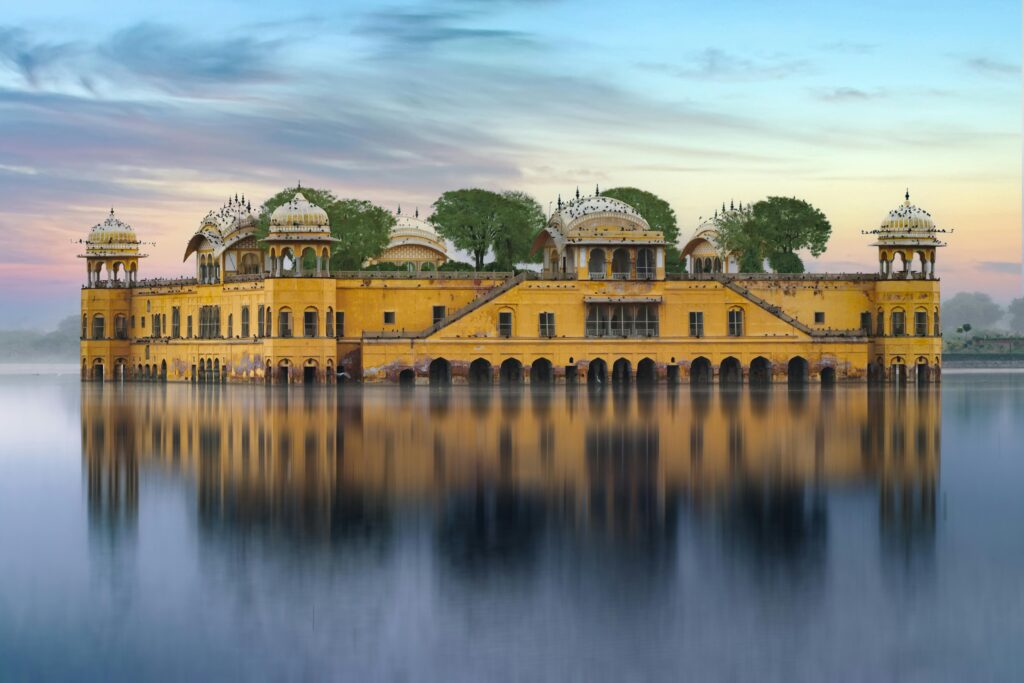
You could mistake the Jal Mahal for a mirage after only one glance. In contrast to the rest of the chaotic city, the elegant palace appears to float on the sparkling Man Sagar Lake.
The Water Palace features four more stories hidden beneath a reservoir, despite the appearance of having just one story. Although the government no longer permits people to access the location, you may still enjoy breathtaking views of the attraction by strolling around the lake on a footpath. It is fully illuminated at night and reflects a golden, brilliant light onto the lake.
12. Jaipur markets:
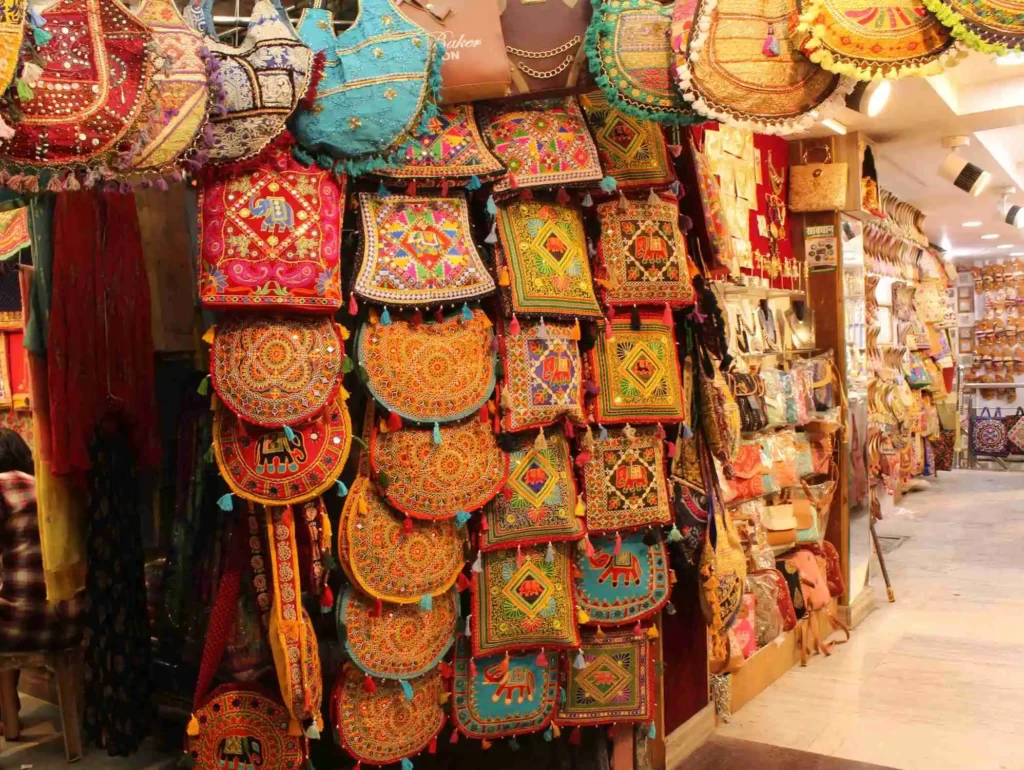
Jaipur is a souvenir lover’s paradise. The Pink City’s markets are teeming with treasures like as valuable jewels and costume jewelry, as well as embroidered fabrics, azure blue crockery, and Rajasthani puppets.
Go to the Rajasthali Handicrafts Emporium, which is located across from Ajmeri Gate, for a hassle-free shopping experience. Premium traditional handicrafts such as blue earthenware adorned with yellow flowers, wooden carving sets featuring Rajasthani characters, and hand-printed saris are available for purchase at this government-run store. These products have set prices, so while you won’t be able to haggle for a lower price, you can also avoid the hassle of haggling.
A jewelry lover’s dream come true is Johari Bazaar. There are dozens of shops selling everything from exquisite silver and gold to costume jewelry, making the market glitter from top to bottom. You’ll find something lovely to take home from here, regardless of your budget.
Lastly, make sure to visit Bapu Bazar for a quick shopping spree before departing Jaipur. Situated only a few streets southwest of Johari Bazaar, this popular tourist destination is brimming with locally manufactured textiles, bejeweled slippers, and gifts of all kinds.
13. Jaigarh Fort:
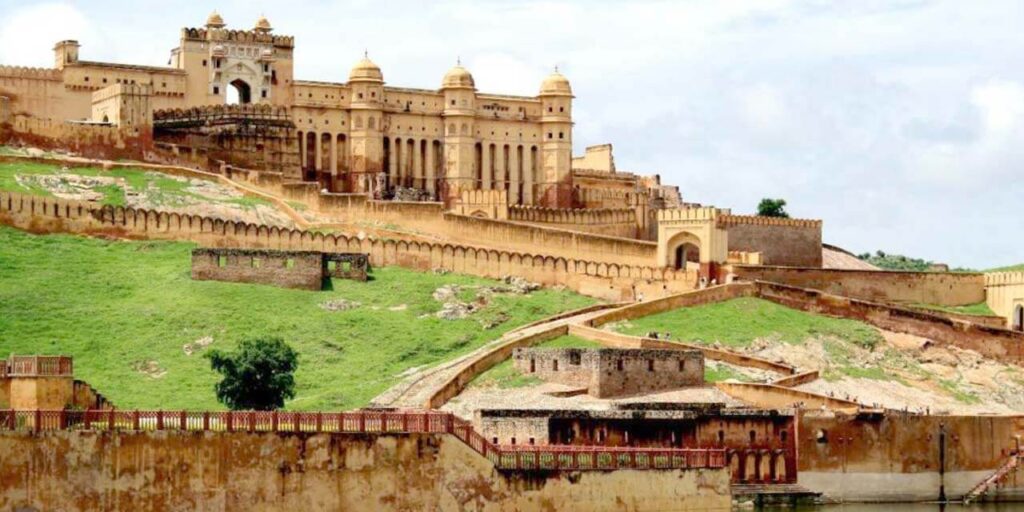
One of the greatest locations to visit in Jaipur if you’re seeking for a breathtaking perspective and up-close access to historical relics is Jaigarh Fort. Which perched on a hilltop above the Amber Fort. It most notable for housing the Jaivana Cannon. It constructed in the early 1700s thought to be the biggest cannon on wheels in the entire globe.
Tourists that visit the site get an appreciation of the fort’s function in defending Jaipur and the surrounding area against invaders. The fort, which stretches over three kilometers, has a network of underground passageways and solid walls made of sandstone. It regarded as Jaipur’s strongest fort.
But the fort wasn’t just fortified—when it was in operation, it was also a luxurious location. Its elaborate design and imposing royal complex are still visible on visits today.
14. Panna Meena Ka Kund:
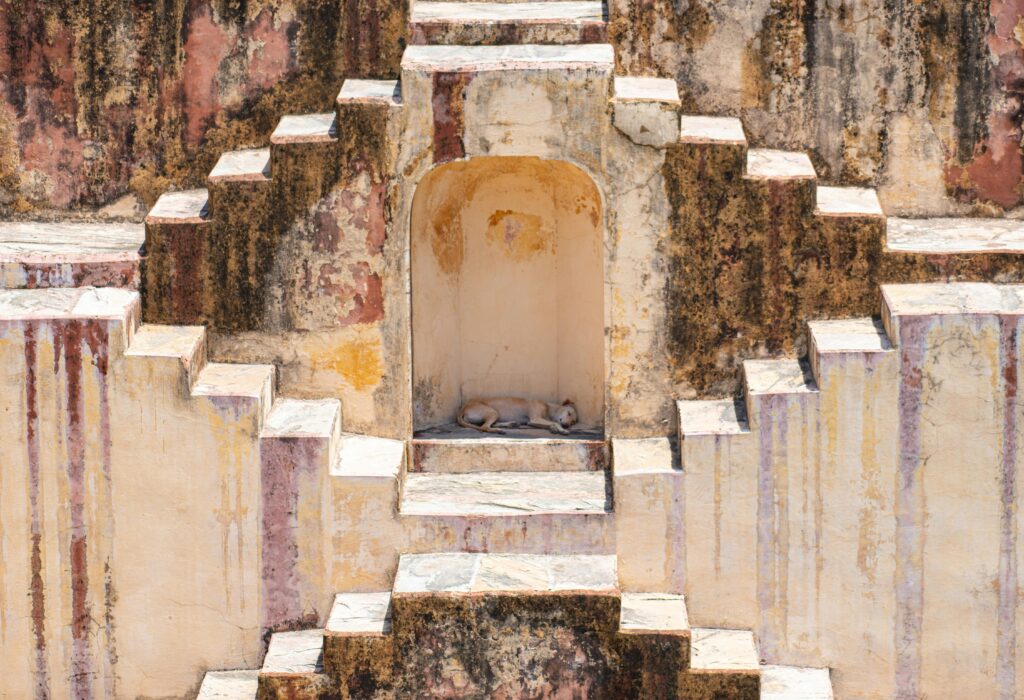
After touring the Amber Fort, a well-liked activity in Amer is to stroll south for ten minutes to see the 16th-century stepwell known as Panna Meena ka Kund.
Before, the locals would gather here to fill their pots with water for household duties and ceremonies. It was also the preferred location for relief from the scorching desert sun.
Nowadays, the main use of the attraction is as a background for pictures taken by tourists, and for good cause. Its golden yellow color and winding staircase, which resemble a scene from one of M.C. Escher’s paintings, provide pictures fit for a postcard. Although it may seem alluring to snap a selfie inside the stunning site, Panna Meena ka Kund only permits tourists to take pictures from the outside.
15. Akshardam Temple:
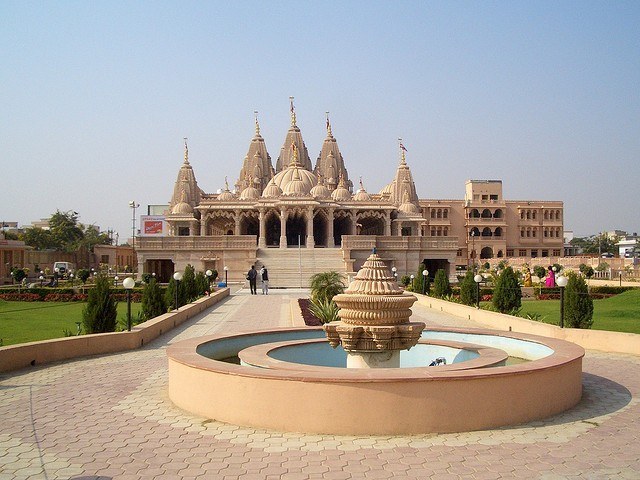
Be not deceived by the site’s age; Akshardham Temple constructed in the twenty-first century as one of ten temples honoring the Hindu deity Narayana, a manifestation of Lord Vishnu.
Nevertheless, the spectacular 23-acre religious complex makes for a great afternoon outing. With its stone carvings of Hindu deities, animals, and landscape, the temple made of pink sandstone and white marble exemplifies the intricate design of Hindu architecture. Enter to view enormous statues made of pure gold and immaculate artwork. Not far away is a serene garden courtyard with a bubbling fountain and an abundance of luxuriant plants.
16. Festivals in Jaipur:
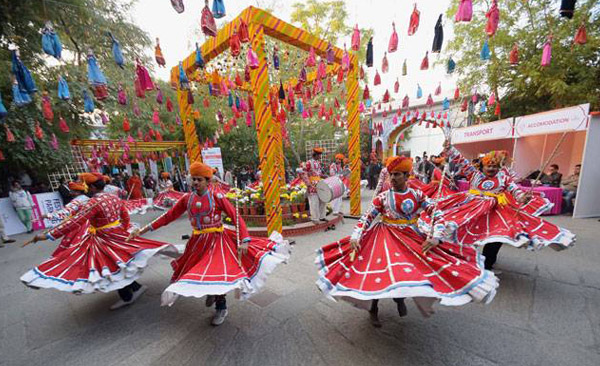
One of the best things to do in Jaipur is to attend one of the many festivals that take place there; the calendar jam-packed with events.
You get books signed by well-known authors at the Jaipur Literature Festival. Witness vibrant creations soar through the skies during the International Kite Festival in January.
Depending on the moon cycle, the city conducts its Elephant Festival in February or March. When the tusked beasts painted with Indian themes and clothed in lavish garments. In July or August, there’s also the two-day Teej Festival, which commemorates the marriage of Shiva and the goddess Parvati.
For more information,Click here.
Visit our website Travel India Info to know more about the places in India or mail us at info@travelindiainfo.com. We will be happy to assist you. Happy Travelling!!
Recent Posts
Europe Travel Guide: Best Places to Visit & Explore
15 Best Amazing Places to Explore in Scotland
9 Best Amazing Day Trip To Explore from Kyoto
